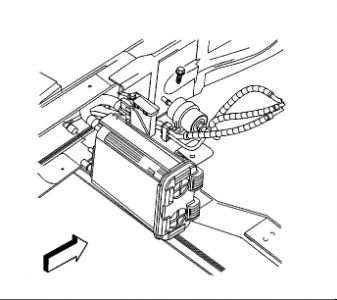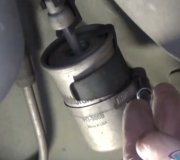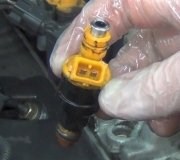I would get the canister off, to make sure.A saturated canister will give a hard fill condition, any accumulation of gas in the canister is a bad thing, pouring out the gas will do nothing but bye you some time until it happens again. It this is how the evap sys works, The evaporative emission (EVAP) control system limits fuel vapors from escaping into the atmosphere. Fuel tank vapors are allowed to move from the fuel tank, due to pressure in the tank, through the vapor pipe, into the EVAP canister. Carbon in the canister absorbs and stores the fuel vapors. Excess pressure is vented through the vent line and EVAP vent solenoid valve to the atmosphere. The EVAP canister stores the fuel vapors until the engine is able to use them. At an appropriate time, the control module will command the EVAP purge solenoid valve ON, allowing engine vacuum to be applied to the EVAP canister. With the EVAP vent solenoid valve OFF, fresh air is drawn through the vent solenoid valve and the vent line to the EVAP canister. Fresh air is drawn through the canister, pulling fuel vapors from the carbon. The air/fuel vapor mixture continues through the EVAP purge pipe and EVAP purge solenoid valve into the intake manifold to be consumed during normal combustion. The control module uses several tests to determine if the EVAP system is leaking. If the canister is ok you could have a fuel tank pressure sensor problem or vent solenoid problem, I would have it scanned for dtc's and have the evap sys smoked for leaks or blockage.
Saturday, October 3rd, 2009 AT 3:21 PM




